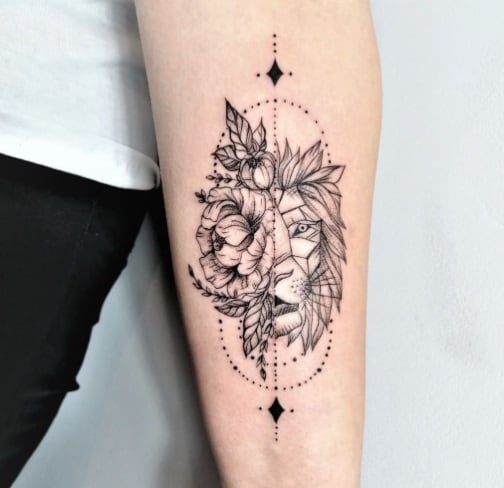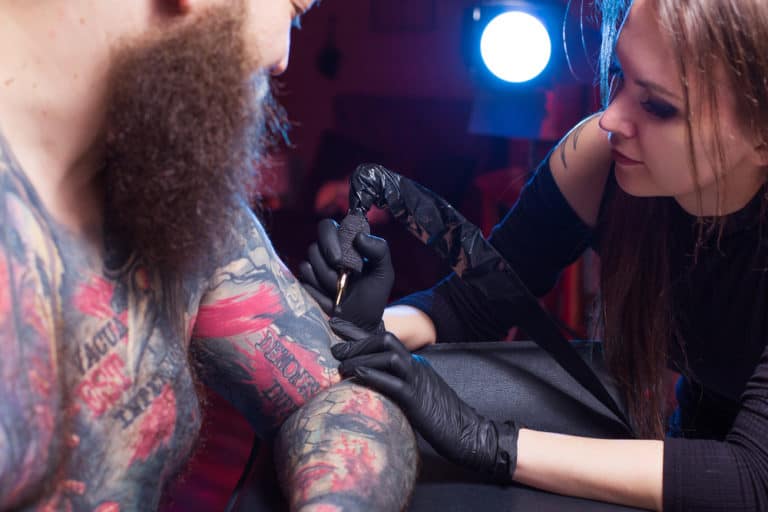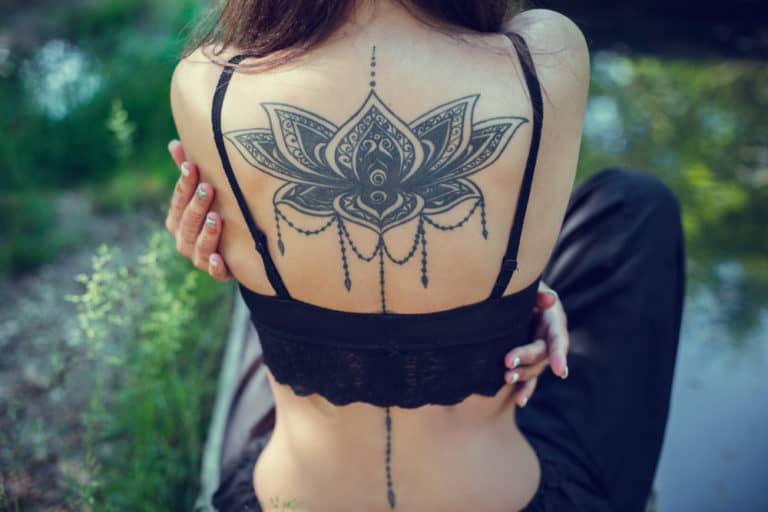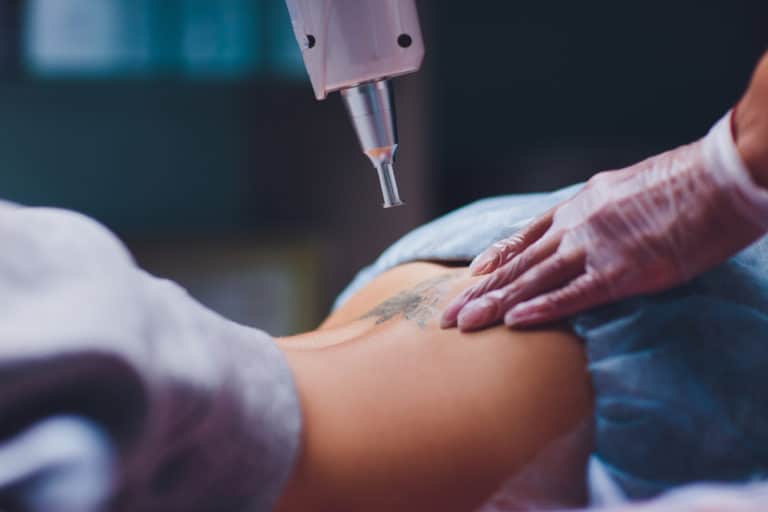Can You Wear Clothes Over A New Tattoo? Check With Me!
You should not put anything on a new tattoo that would restrict the airflow around it and keep it from healing. It is best to keep it uncovered whenever you can. Of course, it will depend on where the tattoo is located.
You shouldn’t wear clothes over a new tattoo unless they are light, loose, and won’t cause any irritation. Tight clothing constantly rubbing against your skin may delay healing and might damage your tattoo. A fresh tattoo is likely to ooze for a couple of days and may even get stuck to the material.
You can wear clothes over a new tattoo, but it is best to avoid doing so if you can. If you do have to wear clothes, you should wear the loosest clothing available. Apart from irritating or infecting a tattoo, clothing is likely to get stained by blood, plasma, and ink seeping from the wound. It is difficult to wash these out, and the stains may be permanent.
If you are looking for inspiration before your tattoo, check out my portfolio – you can find my works and projects here – on Instagram.
The First Five Days Are Crucial After A Tattoo
When you get home with your new tattoo, it is likely to be wrapped in cling wrap to prevent fresh ink, blood, or plasma smearing. The tattooist will provide instructions on when you should remove the wrap – which could be after a few hours or the next day. If you have to go out while the wrap is still on, you can safely wear loose clothing over it because the wrap protects it.
Once you have removed the wrap as instructed, you should ideally not wrap your tattoo again because it needs regular airflow to form scabs and heal quickly. Depending on where the tattoo is on your body, you might need to wrap it in gauze or cling wrap for the first couple of nights when going to bed, but you should unwrap it again first thing in the morning.
Tight clothing that rubs against a fresh tattoo can inhibit the clotting and scabbing process. It may even pull scabs off prematurely if the material is stuck to it when you undress. Also, avoid using rough towels and washcloths when drying the tattoo after a shower or bath. You should avoid any fabric that can irritate or contaminate the wound.
Immediately after getting your tattoo, you should dress in a way that protects the skin and prevents further irritation. If you have to wear clothes over it for reasons of public decency, avoid tight, heavy, or abrasive fabrics.
The first five days are crucial for the healing process, so you should be extra careful during this period.
Sleeping With A Fresh Tattoo
You spend many hours sleeping and in contact with bedclothes or pajamas. Many people roll around in bed while they’re asleep, and this can cause materials to stick to or irritate a tattoo.
Try not to sleep on your tattoo, as this may prevent air from reaching it.
If you sleep on your tattoo, your clothing will be more likely to rub against it and cause irritation. While it is difficult to control your movements in your sleep, try to sleep on the side opposite the tattoo.
If you have a back tattoo, it is better to sleep on your stomach or side. Always opt for sleepwear made of thin fabrics, like polyester, cotton, or linen. It might be even better to sleep naked for a few days and leave your clothes off in the privacy of your home.
If your tattoo is going to come into direct contact with your bed linen, It may be preferable to sleep with soft cotton pajamas because you don’t want it sticking to the sheets. If sleeping nude is not an option, wear soft, loose pajamas made of a breathable fabric. Such fabrics usually wick moisture away from the skin and allow the air in.
You should always wash bed sheets, pillowcases, and comforters before getting a tattoo, especially if your pets sleep with you. Even if they don’t, you are constantly shedding skin cells that attract minute mites and other nasties that could infect your tattoo. To reduce these risks, you should also wash your tattoo before bed and when you wake up.
Clothing To Avoid With A Fresh Tattoo
If you are a woman and the tattoo is in your bra area, do not wear a tight bra that will rub against it. Be daring and go braless for a while until the tat is well and truly healed. Wearing tight clothing not only restricts airflow but can also damage the skin and trap moisture in it. This can lead to infections and scarring.
If the tattoo is on your back, chest, or abdomen, you should wear only the lightest, airiest clothes when you go out. Give it as much exposure to air as you can when you are at home. If you have an active lifestyle and sweat a lot, you should try to keep your tattoo as dry as possible for the four to six weeks it will take to heal.
After getting a tattoo on the hip, lower back, middle, or lower abdomen, avoid jeans and pants with a tight waistband. Polyester sweatpants or loose-fitting cotton chinos are preferable. With tattoos on the lower legs and thighs, wear shorts rather than trousers if possible and avoid leggings and skinny jeans.
If you have a hip tattoo, wear very high waisted underpants or go commando for a few days. Underwear must not be tight-fitting and should be made of breathable material. If the tattoo is on your arm, wear short-sleeved cotton t-shirts. If it is too cold, wear a soft shirt or hoodie that does not cling to your arms.
If the tattoo is on your foot, go barefoot as much as possible. When you do have to put on footwear, use soft slippers or other open, loose-fitting shoes like flip-flops. Avoid wearing strappy sandals for four to six weeks after getting the tattoo, as you don’t want them rubbing on your skin.
Tight-fitting clothing used for gym, yoga, cycling, gymnastics, and swimming should be avoided because it can overstretch the skin and pull on the wound. You also shouldn’t allow the tattoo to come into contact with any gym and other sporting equipment because the risk of infection from these is high.
For women, a maxi dress, chemise, or backless sundress can be pretty much worn over a fresh tattoo no matter where it is.
Keeping A Tattoo Out Of Direct Sunlight
Clothing rubbing against the skin can alter the tattoo’s appearance and ruin the beautiful artwork you paid so much for. If the tattoo is on your arm or leg, and you don’t need to cover it for work, leave it open while you are indoors and out of the sun.
If you go outside, you should not expose your tattoo to the direct sun, but that doesn’t mean you should apply another bandage or other wrapping to it. Instead, wear light, permeable, loose-fitting clothing that allows your skin to breathe and the tattoo to stay dry.
While you should always cover your tattoo with sunblock if it might be exposed to direct sunlight, you should only do so after it has completely healed. Healing takes between four to six weeks. Applying sunblock to a fresh tattoo can impede recovery and may lead to infection.
Clothing offers much better protection from the sun than any sun-blocking creams.
If your clothing sticks to your tattoo, it is essential not to rip it off. You should wet the clothing with water and then gently peel it away from the skin. Applying an antibacterial ointment very thinly across the tattoo may help to stop clothes from sticking to it.
Do not slather the ointment over the tattoo in a thick layer because this can affect the healing process.
Conclusions
Wearing clothing over a new tattoo may be necessary for work or weather reasons. Ideally, you should avoid wearing clothing over a tattoo if possible, but if you can’t, then at least wear loose-fitting items that don’t rub or pull on the skin. Tight-fitting clothes are a no-no if you want your tattoo to heal quickly and without infection.







